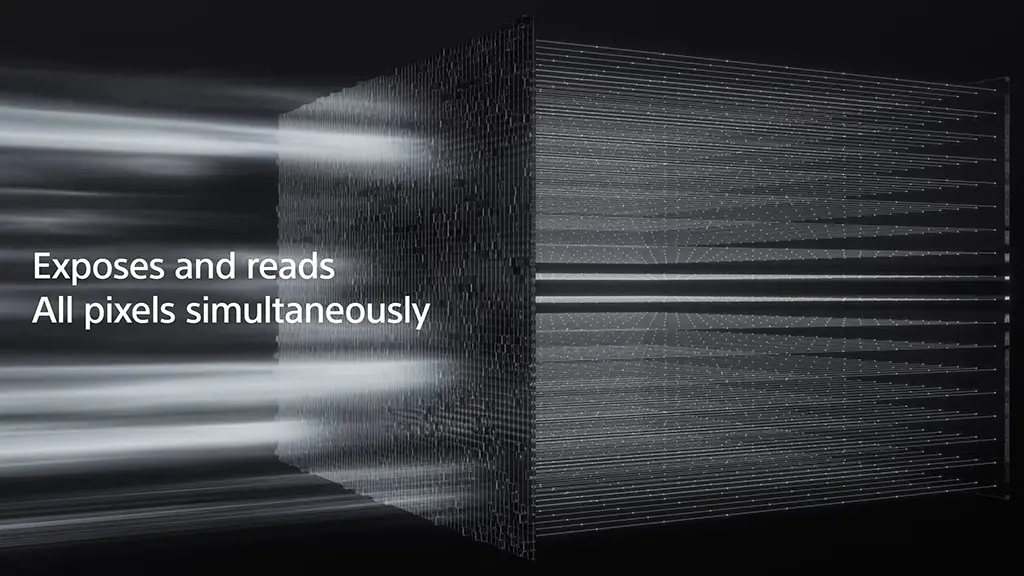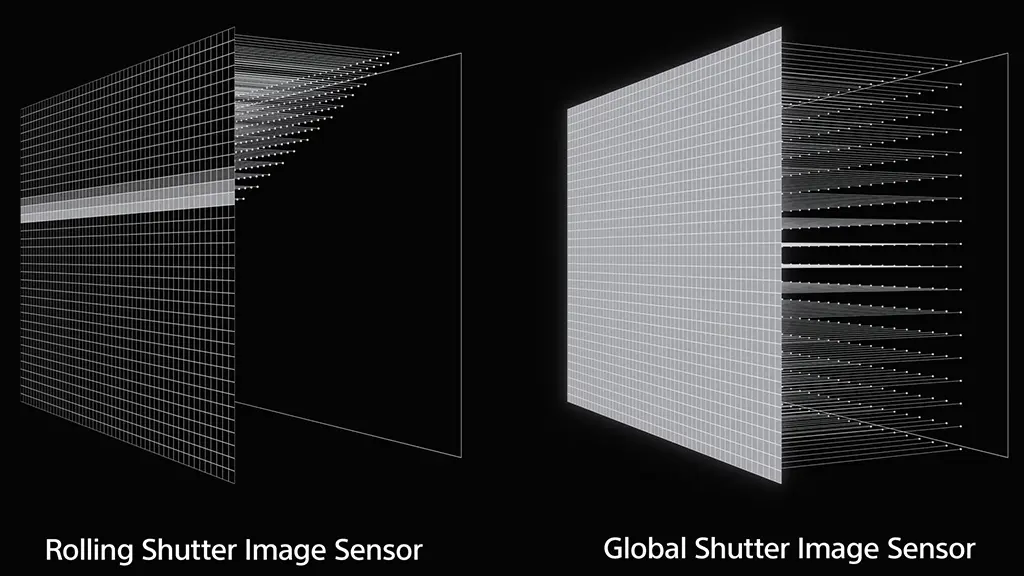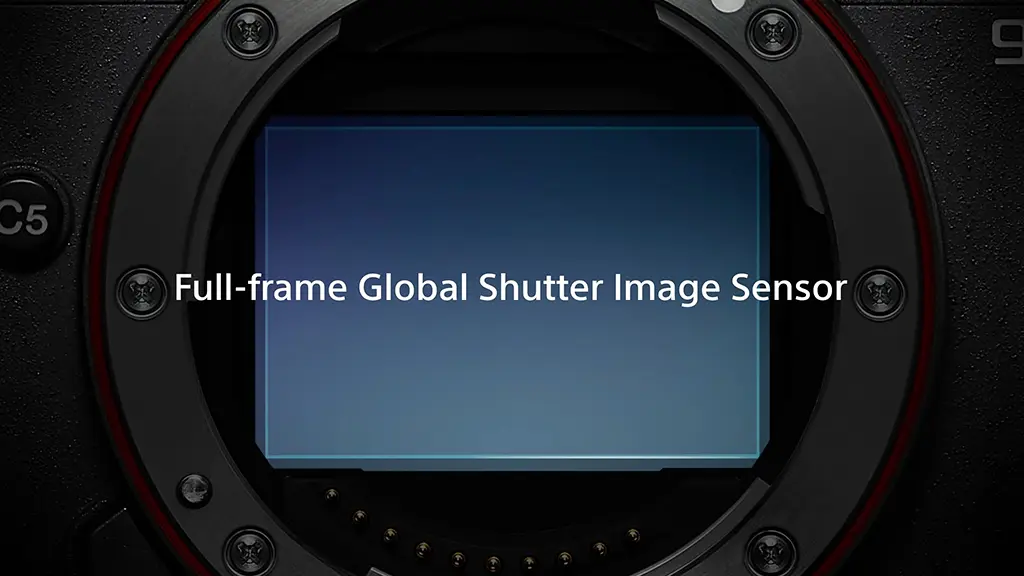You might have landed here due to Sony‘s release of the Alpha a9 III, the world’s first full-frame mirrorless camera with a global shutter sensor. Well, ever since its announcement, I have been hearing or seeing “global shutter” more often. Global shutter technology, often used in photography and imaging, refers to a specific type of image sensor or camera technology that allows for the simultaneous capture of the entire image frame in a single snapshot.
Global shutter technology is not new; it has been around for several decades now, more or less. It’s also known as charge-coupled device (CCD) or Electron-multiplying CCD (EMCCD) before. In a global shutter system, all pixels on the image sensor are exposed to light and read out together. This results in distortion-free image capture, making it ideal for fast-moving subjects. It’s commonly used in high-speed photography, industrial machine vision, and scientific imaging.

Global Shutter vs Rolling Shutter
In the context of mirrorless cameras and digital cameras, the terms “global shutter” and “rolling shutter” refer to different mechanisms for controlling exposure and capturing images.
| Global Shutter | Rolling Shutter |
|---|---|
| Global shutter is an image sensor technology that captures the entire image frame at once, exposing and recording all pixels simultaneously. | A rolling shutter, or a regular shutter, captures images by scanning the sensor row by row. It doesn’t capture all pixels simultaneously but sequentially from top to bottom (or vice versa). |
| There is no rolling effect or distortion when capturing fast-moving subjects or during rapid camera movements. | Rolling shutters can cause distortion in images or videos when capturing fast-moving subjects or when the camera is in motion. This happens because different parts of the image are recorded at slightly different times, creating a skewing effect. |
| It’s a choice for scenarios requiring precise timing, minimal distortion, and capturing fast-moving subjects, like high-speed photography, scientific imaging, and professional video applications. | The majority of consumer and mirrorless cameras often use rolling shutters because they are simpler and more cost-effective. They work well for everyday photography and video recording. |


Advantages of Global Shutter
Global shutter technology offers multiple advantages over rolling shutter technology, especially in scenarios that demand precision and minimal distortion.
- Eliminates Rolling Shutter Artifacts: Global shutter sensors capture the entire image frame simultaneously, eliminating the rolling shutter effect and distortion. This is crucial for capturing fast-moving subjects and maintaining the image’s integrity even when the camera is in motion.
- Accurate Timing: Global shutters are ideal for applications requiring precise timing. They excel at capturing high-speed events, synchronizing multiple cameras, and recording scientific data with exact timing.
- Better for Fast Motion: Global shutter is well-suited for capturing high-speed motion without distortion. It is commonly used in sports and action photography, as well as scientific experiments involving rapid subject movement.
- Reduced Motion Blur: Simultaneously capturing the entire image frame minimizes motion blur, a common issue in rolling shutter cameras during rapid subject or camera movement.
- Improved Flash Photography: In scenarios where flash synchronization is critical, global shutter sensors ensure that the entire frame is exposed to the flash simultaneously, resulting in well-lit and evenly exposed images.
- Cinematography and Professional Video: The film and video industry utilizes global shutter technology in high-end cameras for high-speed action sequences and producing distortion-free slow-motion footage.

Disadvantages of Global Shutter
While global shutter technology offers various advantages, it’s not a perfect system, and there are several disadvantages as well.
- Cost: Global shutter sensors are more expensive to produce than rolling shutter sensors due to the added complexity and components involved.
- Reduced Dynamic Range: Some global shutter sensors may exhibit a reduced dynamic range compared to certain rolling shutter sensors. This limitation can impact their ability to capture a wide range of light and dark areas without overexposure or underexposure.
- Reduced Sensitivity: Global shutter sensors may be less sensitive to light, especially when compared to rolling shutter sensors. This can result in lower performance in low-light conditions.
- Smaller Pixels: In certain cases, global shutter sensors may feature smaller individual pixel sizes. Smaller pixels can negatively affect image quality, particularly noise and low-light performance.
- Heat Generation: Simultaneous sensor capture can generate more heat, which may be a concern in specific applications, particularly in cameras that must operate for extended periods.
- Limited Availability: Global shutter sensors are less common in consumer-level cameras. They are typically found in specialized and high-end cameras, making them less readily available and affordable for the average consumer. That’s why the Sony a9 III is a game-changer and could start a domino effect in the camera industry.
- Limited Resolution: Some global shutter sensors may have limited resolution compared to rolling shutter sensors of the same size and generation. This limitation can affect the level of detail and sharpness in images.
- Reduced Battery Life: The additional complexity and power requirements of global shutter technology can lead to shorter battery life in cameras equipped with global shutters compared to those with rolling shutters.
Overall…
Overall, Global Shutter is an excellent technology, and I want to see Sony roll out more mirrorless cameras with a global shutter sensor. Perhaps we may see a new A7 series with a global shutter sensor next year. I hope Sony will bring global shutter to its APS-C camera, too. Who knows, the Sony a6700‘s successor might feature a global shutter already. These are just hopeful thinking, but I hope it would come sooner than expected.







